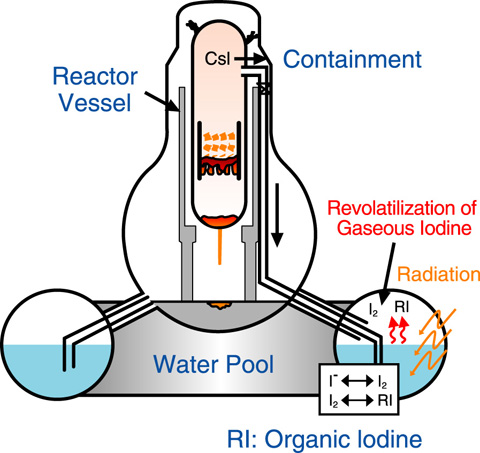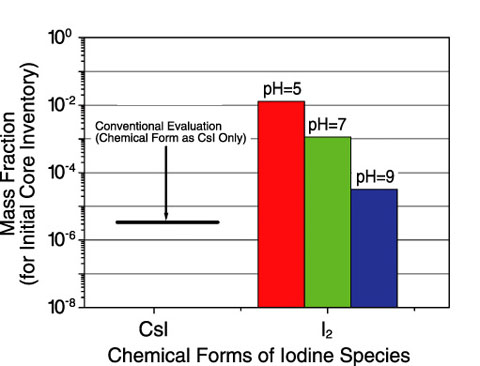
Fig.5-15 Revolatilization of iodine under severe accident conditions

Fig.5-16 Iodine distribution in the containment atmosphere
To evaluate the public risk from severe accidents of light-water reactors, the source term, which is defined as the timing and the characteristics of the release of radionuclides into the environment, needs to be evaluated first. Among radioactive nuclides, iodine is the most significant contributor to public health consequences. The iodine behavior in plants is as follows: once a large amount of iodine released from the core dissolves in the containment water pool, it revolatilizes to the gas phase as the highly volatile I2 and organic iodine through chemical reactions under severe accident conditions (Fig.5-15). Iodine chemistry is a complex phenomenon influenced by a variety of boundary conditions such as temperature, pH of the pool water, radiation dose rate, and impurities. Therefore, reactions in iodine chemistry are some of the uncertain factors in the source term evaluation.
To reduce the uncertainties in the source term evaluation, we performed experiments for improving and expanding the chemical reaction database and mechanistic models for iodine chemistry under severe accident conditions and developed a simulation code for the kinetics of iodine chemistry (Kiche).
We incorporated Kiche in a thermal hydraulics and radionuclide behavior analysis code of light water reactors to estimate source term (THALES 2) to enhance the efficiency of simulating the iodine behavior using THALES 2.
In addition, we carried out source term assessment for various accident scenarios.
Fig.5-16 shows the results of iodine distribution in the containment atmosphere for an accident termination scenario in which the containment is not damaged by a core damage accident triggered by the loss of core coolant injection for a 1100 MWe BWR.
In conventional evaluations, we considered only the chemical form of CsI. The mass fraction of CsI was finally around 10-6 when the reduction effect of the gravitational settling and the containment spray was taken into account. When iodine chemistry was considered, it became clear that (1) revolatilization and accumulation occurred intermittently from the liquid phase to the containment atmosphere of I2 and (2) the accumulation of I2 increased as the acid condition.
The results show that long-term pH control of liquid phases is important to inhibit the revolatilization of gaseous iodine.
In future studies, we plan to evaluate the effect of organic iodine and the accidents at Fukushima Daiichi NPS.